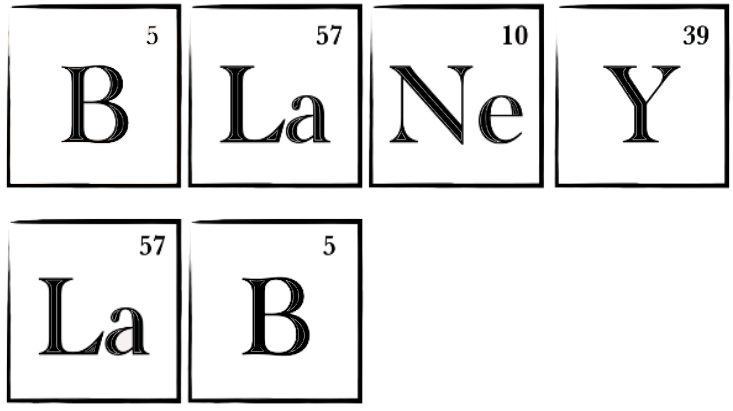Welcome to the Blaney Lab !
Our research focuses on the intersection of fundamental and applied aspects of analytical, environmental, inorganic, organic, and toxicological chemistry. Our primary research interests are (1) the occurrence, fate, transport, and toxicity of contaminants of emerging concern (CECs) in natural and engineered systems and (2) the recovery of vital resources, such as nitrogen and phosphorus, from waste streams to ensure sustainable development. These research areas align with regional, national, and global grand challenges related to clean water, public health, and environmental quality.
Research Area #1: Occurrence, fate, transport, & toxicity of CECs
Our lab specializes in the detection and fate of endocrine disrupting chemicals, organometallic compounds, per- and polyfluoroalkyl substances (PFAS), pharmaceuticals and personal care products, and other contaminants of emerging concern (CECs) in natural and engineered systems using advanced analytical methods like online solid phase extraction liquid chromatography tandem mass spectrometry (SPE-LC-MS/MS) and high performance liquid chromatography with fluorescence detection (SPE-HPLC-FLD).
Ongoing project: CAREER: Forensic analysis of dissolved organic matter, emerging contaminants, and toxicity to detect leaking sewers in urban streams (funded by the NSF CAREER Award program)
Ongoing project: Ion-exchange membranes as passive samplers for chemically-diverse PFAS (funded by the DOD Strategic Environmental Research and Development Program)
Ongoing project: Assessing the suitability of recycled wastewater with variable stormwater influence for use in crop irrigation (collaboration with Dr. Sara Nason and Dr. Nubia Zuverza-Mena (Connecticut Agricultural Experiment Station), funded by the USDA AFRI program)
Ongoing project: Characterization of PFAS in groundwater, sediment, wastewater, and biosolids samples (funded by the USGS Cooperative Ecosystem Studies Units program)
We are also interested in treatment technologies to remove CECs from water and wastewater. Currently, we are investigating the fate of CECs during ozonation, UV irradiation, and advanced oxidation processes. Many of our group members are looking at how specific classes of compounds (i.e., antibiotics, organometallics, UV-filters) behave in these systems. For these projects, we are interested in the following: (1) water/wastewater treatment of CECs, (2) identification of transformation products, and (3) analysis of the residual toxicological activity of treated waters.
Ongoing project: A 'trap-and-zap' technology for cost-effective removal and destruction of aqueous-phase per- and polyfluoroalkyl substances at DoD sites (collaboration with Dr. Dongye Zhao (Auburn University), funded by SERDP)
Ongoing project: ERASE-PFAS: A "concentrate-and-destroy" technology for treating per- and polyfluoroalkyl substances using a new class of adsorptive photocatalysts (collaboration with Dr. Dongye Zhao (Auburn University), funded by the NSF Environmental Engineering program)
Research Area #2: Resource recovery from municipal & agricultural waste
Our lab has also been developing innovative technologies to recover resources from various waste streams. In particular, we have developed the following patented technologies:
The PEARS technology was initially targeted to agricultural waste management in Maryland, which is one of the largest poultry-producers in the United States. We use PEARS to recover nutrients, including nitrogen, phosphorus, and potassium, from poultry manure to prevent nutrient runoff into the Chesapeake Bay and other sensitive water bodies. Our ongoing efforts are aimed at optimizing the process chemistry and engineering for other animal manure sources and scaling the technology up to the farm-scale level. The NERD technology represents a paradigm shift in nutrient recovery efforts, allowing customizable recovery efficiency without major energy or chemical inputs by exploiting the Donnan dialysis concept. We have shown high nutrient recovery in different waste streams, including human urine, wastewater effluent, and animal manure. Our ongoing efforts are exploring the fundamental chemistry and effects of operating conditions on the rate and extent of nutrient recovery.
Ongoing project: Simultaneous recovery of nutrients from hog manure and treatment of brackish groundwater for irrigation purposes through sustainable Donnan dialysis processes (funded by the USDA AFRI program)
Ongoing project: INFEWS N/P/H2O: Development of Sustainable Nutrient Extraction and Recovery Devices (NERDs) for Municipal and Agricultural Wastewater
(funded by the NSF INFEWS/N/P/H2O and Environmental Engineering programs)



